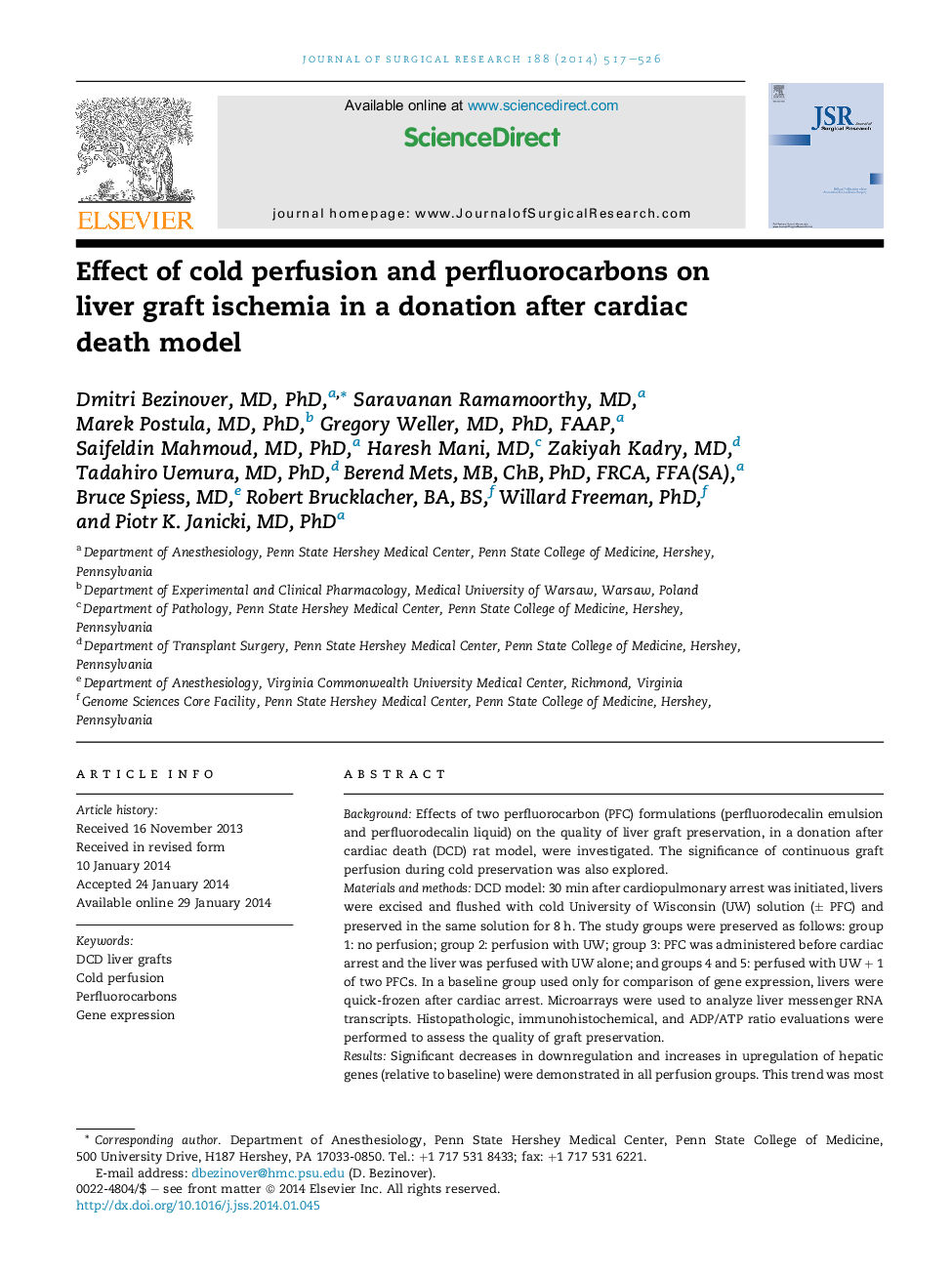| Article ID | Journal | Published Year | Pages | File Type |
|---|---|---|---|---|
| 6254053 | Journal of Surgical Research | 2014 | 10 Pages |
BackgroundEffects of two perfluorocarbon (PFC) formulations (perfluorodecalin emulsion and perfluorodecalin liquid) on the quality of liver graft preservation, in a donation after cardiac death (DCD) rat model, were investigated. The significance of continuous graft perfusion during cold preservation was also explored.Materials and methodsDCD model: 30 min after cardiopulmonary arrest was initiated, livers were excised and flushed with cold University of Wisconsin (UW) solution (± PFC) and preserved in the same solution for 8 h. The study groups were preserved as follows: group 1: no perfusion; group 2: perfusion with UW; group 3: PFC was administered before cardiac arrest and the liver was perfused with UW alone; and groups 4 and 5: perfused with UW + 1 of two PFCs. In a baseline group used only for comparison of gene expression, livers were quick-frozen after cardiac arrest. Microarrays were used to analyze liver messenger RNA transcripts. Histopathologic, immunohistochemical, and ADP/ATP ratio evaluations were performed to assess the quality of graft preservation.ResultsSignificant decreases in downregulation and increases in upregulation of hepatic genes (relative to baseline) were demonstrated in all perfusion groups. This trend was most pronounced in the PFC groups. Lower fat content and ADP/ATP ratio and a reduction in Caspase 3 activation were found in all perfusion groups.ConclusionHypothermic perfusion of rat DCD liver grafts with oxygenated UW solution (± PFC) produced superior preservation compared with nonperfusion storage. The observed changes in expression of hepatic genes may represent a protective effect in the DCD model.
